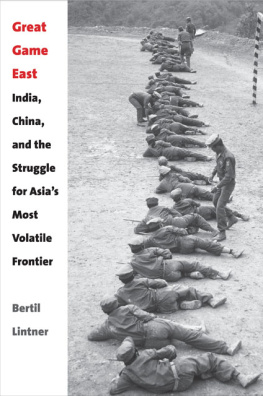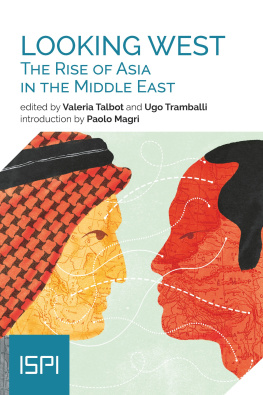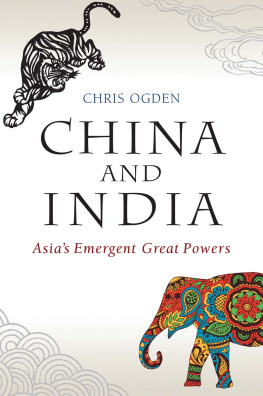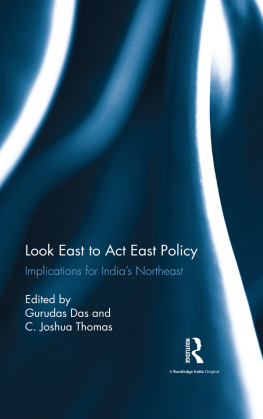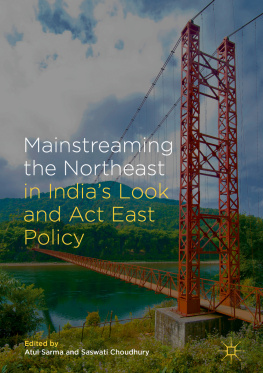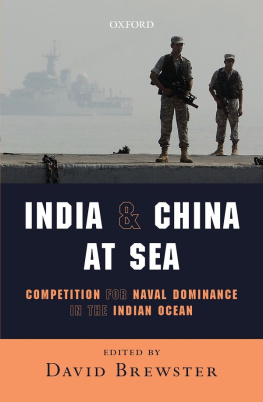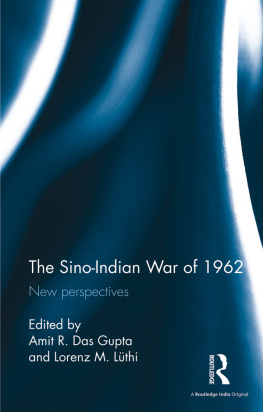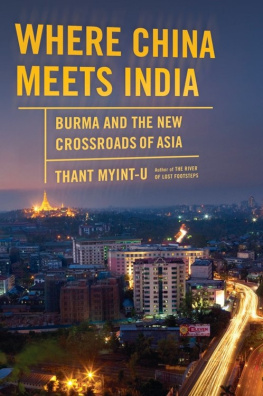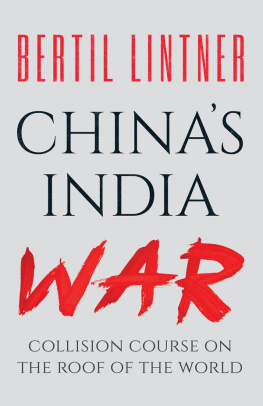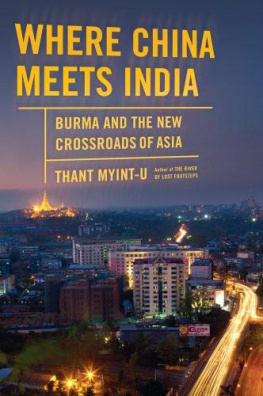

First published in the United States in 2015 by Yale University Press.
Great Game East copyright 2012, 2015 by Bertil Lintner. First published in India in 2012 by HarperCollins Publishers India.
This edition published by agreement with HarperCollins Publishers India.
Published with assistance from the foundation established in memory of Amasa Stone Mather of the Class of 1907, Yale College.
All rights reserved.
This book may not be reproduced, in whole or in part, including illustrations, in any form (beyond that copying permitted by Sections 107 and 108 of the U.S. Copyright Law and except by reviewers for the public press), without written permission from the publishers.
Yale University Press books may be purchased in quantity for educational, business, or promotional use. For information, please e-mail sales.press@yale.edu (U.S. office) or sales@yaleup.co.uk (U.K. office).
Set in Electra type by IDS Infotech Ltd., Chandigarh, India.
Printed in the United States of America.
Library of Congress Cataloging-in-Publication Data
Lintner, Bertil, author.
Great game east: India, China, and the struggle for Asias most volatile frontier / Bertil Lintner.
pages cm
Includes bibliographical references and index.
ISBN 9780300195675 (cloth: alk. paper) 1. IndiaForeign relationsChina. 2. ChinaForeign relationsIndia. 3. GeopoliticsAsia. 4. IndiaForeign relationsAsia. 5. AsiaForeign relationsIndia. 6. ChinaForeign relationsAsia. 7. AsiaForeign relationsChina. I. Title.
DS450.C6L562 2015
327.54051dc23
2014034298
A catalogue record for this book is available from the British Library.
This paper meets the requirements of ANSI/NISO Z39.481992
(Permanence of Paper).
10 9 8 7 6 5 4 3 2 1

CONTENTS

INTRODUCTION
In the late nineteenth century, Arthur Conolly, an intelligence officer of the British East India Companys Sixth Bengal Light Cavalry, coined the expression the Great Game to describe the strategic rivalry between the British and Russian empires for supremacy in Central Asia. More than any other objective, the Russians also sought access to the Indian Ocean. The idea of the Great Game was popularized and entered public consciousness by Rudyard Kipling, the grand guru of British imperialism, in his 1901 novel Kim. The story about the young Anglo-Irish orphanwho was recruited by the secret service of British India and traveled undercover along the Grand Trunk Road to Indias remotest western frontiers during the heyday of the Western colonial empireshas captivated the imagination of generations in Asia and the West alike. But behind Kiplings highly romanticized version of the great spying game lay what undoubtedly was at the time the main superpower conflict in Asia.
In recent years, the term the Great Game, or more often the new Great Game, has come to signify the conflict between the United States and other Western powers on the one hand, and Russia and China on the other, over Central Asias oil and other natural resources. By direct intervention, or acting through proxies, this conflict is now evident to everyone in the Central Asian republics of the former Soviet Union, and in Afghanistan, Iran, and Iraq.
But there is also another Great Game being played out in Asia: in the east, at the crossroads of the Indian Subcontinent, China, and Southeast Asia. The rivalry between India and China goes back to the 1950s. Spies and agents from both sides have been active in each others volatileand disputedfrontier areas for decades. Intelligence operatives from various other countries have also wanted to keep an eye on the local insurgencies inside the forbidden tribal areas in Indias northeast, long out of bounds for foreigners and hotbeds of intrigue and meddling by China, Pakistan, and Bangladesh. Likewise, towns in northern India have been used as staging points for clandestine forays across the Himalayas and into Chinese-occupied Tibet.
In the 1950s, the friendship between India and China seemed to blossom under the Hindi slogan Hindi Chini Bhai Bhai, or Indians and Chinese are brothers. Both countries viewed themselves as champions of the Third World, which was emerging as old colonial empires, ruled by the British, the French, and other Western powers, crumbled. But Chinese machinations in Tibet, which it had occupied in 1950, and uprising in the Tibetan capital Lhasa in 1959 changed all that. Tibets spiritual leader, the Dalai Lama, fled to India and set up a government in exile in the foothills of the Indian Himalayas. Disputes also arose over the border between India and China, which had been settled in 1914 by the British colonial power and Tibetan representatives, but never ratified by Beijing. In 1962, Chinese troops stormed across the de facto border and dealt India a crushing and humiliating defeat from which it has yet to recover, at least psychologically.
In the midst of this crisis, in the 1950s and 1960s, ethnic insurgencies broke out among the Nagas, the Mizos, and other tribes in northeastern India, who are more ethnically akin to Southeast Asian than South Asian peoples but are predominantly Christian. At first, Indias bitter enemy Pakistan supported those rebels, providing them with weapons and sanctuaries in erstwhile East Pakistan, now Bangladesh. But it was China that became the main provider of munitions for the ethnic insurgents. Many were also trained in China. Today, the Chinese government does not openly support those groups, but they have had access to the so-called blackin reality more grayarms market in China. Bangladesh, which the Indian Army helped break away from Pakistan in 1971, became involved too as suspicions grew between the new country and its liberator. Militants from the United Liberation Front of Asom (Assam), or ULFA, were allowed to set up camps in Bangladesh. In April 2004, a huge consignment of Chinese weapons was seized in the Bangladeshi port city of Chittagong, and the munitions were destined for Assamese and other insurgents in Indias northeast.
It is important to remember that Chinaor Pakistan or Bangladeshdid not invent the rebellions in Nagaland, Mizoram, Manipur, and Assam but simply took advantage of decades-old, and even centuries-old, ethnic conflicts. British colonialism brought with it a semblance of artificial peace, Pax Britannica, which froze the problems but did not solve them. After Indias independence in 1947, many of these old conflicts flared anew, and without a proper understanding of the complex histories of the northeastern peopleswhich differ in many respects from the evolution in the rest of Indiaand a sober analysis of their fractious rebel movements and fragile alliances, little headway can be made toward achieving peace in one of Asias most volatile regions. The Great Game in the East is also about Indias struggle to keep these ethnically diverse states within the Union. Many Nagas, Mizos, and Manipuris, and even Assamese, do not consider themselves Indians, and it is necessary to understand why they feel that way.
The rebels, isolated in the remote mountains between India and Burma, have always tried to get support or sympathy from the international community, and many people from outside the region have all along taken an interest in the insurgencies among the Nagas and the Mizos especially, for a variety of reasons. Some felt genuine sympathy for the tribal underdog facing the might of the Indian military; others were fascinated by exotic tales of the Naga headhunters who had become Christian soldiers. Such romanticism aside, it is still important to have a better understanding of the influence Western missionaries had on Naga and Mizo societies, and why a newborn nationalism among them, thanks to Christianity, eventually led to open revolt against the Indian state.
Next page
